A successful and thriving business is built on a foundation of productivity, and this productivity is achieved through consistent and efficient work processes. In order to achieve such efficiency, it is important for workers to have clear guidance and instructions at every stage of the work process.
Such instructions provide workers with the necessary information on where to begin, how to carry out their tasks, who should be involved, and when to complete each step. For this reason, it is crucial for department managers to provide detailed and well-structured instructions to their staff, which in turn ensures the smooth running of the entire work system. To aid workers in carrying out their tasks with precision, it is recommended that companies design a comprehensive and easy-to-follow instruction template.
Table of Contents
Work Instruction Templates
Streamline your work processes and ensure consistent execution with our comprehensive collection of Work Instruction Templates. A work instruction is a detailed document that provides step-by-step guidance on how to perform a specific task or process.
Our customizable and visually appealing templates offer a structured framework to document and communicate work instructions effectively. Whether you’re a team leader, supervisor, or business owner, our templates provide a user-friendly format to standardize work procedures, enhance productivity, and ensure quality output.
From outlining the required materials and tools to detailing each step and highlighting safety precautions, our templates enable you to create clear and concise work instructions that are easily understandable by employees.
With customizable elements and engaging designs, our templates make it easy to present information in a visually appealing and accessible manner. Simplify training, improve consistency, and enhance operational efficiency with our versatile and easy-to-use Work Instruction Templates. Download now and empower your workforce with clear and comprehensive instructions for seamless task execution.
What is work instruction?

A work instruction is a document or set of documents that provides detailed guidance to workers on how to perform a specific task or activity. Work instructions typically include step-by-step instructions, diagrams, or other visuals to help the worker understand how to carry out the task.
Work instructions can be used for a wide range of activities, from manufacturing processes and assembly line work to administrative tasks and customer service procedures. Work instructions are important because they help to ensure consistency, quality, and safety in the work that is performed, and they can be used as a training tool for new employees. They can also be updated and improved over time to reflect changes in the work process or to incorporate new best practices.
Why are work instructions important?
Work instructions are important for several reasons:
Consistency: Work instructions provide workers with clear and consistent guidance on how to perform tasks. This consistency helps to ensure that the quality of the work is consistent, and that each worker performs the task in the same way.
Quality: Work instructions help to ensure that tasks are performed to a high standard of quality. They can include information on quality standards, tolerances, and other important metrics that need to be met for the work to be considered acceptable.
Safety: Work instructions can include safety guidelines and precautions that workers need to follow to ensure their safety while performing tasks. This helps to minimize the risk of accidents or injuries in the workplace.
Training: Work instructions can be used as a training tool for new employees, helping them to quickly learn how to perform tasks correctly and efficiently.
Continuous improvement: Work instructions can be updated and improved over time as new best practices are developed or as the work process changes. This helps to ensure that workers always have access to the most up-to-date and effective guidance.
What should work instructions include?
Work instructions should include the following information:
Task description: A clear and concise description of the task or activity that the worker is expected to perform.
Purpose: An explanation of the purpose or objective of the task, including its contribution to the overall work process or business goal.
Scope: A description of the scope of the task, including any limitations or restrictions that apply.
Tools and equipment: A list of the tools, equipment, and materials required to perform the task, as well as any safety equipment that may be necessary.
Procedures: Step-by-step instructions on how to perform the task, including any specific procedures or best practices that should be followed.
Quality standards: Any quality standards, tolerances, or metrics that need to be met for the task to be considered acceptable.
Safety precautions: Any safety precautions or guidelines that need to be followed to ensure the safety of the worker and others in the workplace.
Troubleshooting: Guidance on what to do if a problem arises during the task or activity, including who to contact for help.
References: A list of any references or supporting materials that may be helpful for the worker, such as manuals, diagrams, or technical documents.
The Difference between Work Instructions and SOPs
Work instructions and Standard Operating Procedures (SOPs) are two related but distinct types of documents used in businesses and organizations. While they serve similar functions, there are some key differences between the two:
Purpose: The primary purpose of work instructions is to provide workers with detailed guidance on how to perform a specific task or activity. SOPs, on the other hand, provide a more comprehensive overview of a particular process or procedure, including its purpose, scope, and interdependencies with other processes.
Scope: Work instructions are typically focused on a specific task or set of tasks, while SOPs cover a broader process or procedure. An SOP may include multiple tasks, each of which may be further broken down into work instructions.
Detail level: Work instructions are typically more detailed than SOPs, as they provide step-by-step guidance on how to perform a specific task. SOPs, by contrast, provide a higher-level overview of a process or procedure, with less emphasis on detailed guidance for individual tasks.
Use: Work instructions are primarily used by workers who are directly involved in performing a task or activity, while SOPs are used by a wider range of stakeholders, including managers, supervisors, auditors, and other personnel who need to understand the process as a whole.
Audience: Work instructions are typically written for a specific audience, such as a particular department or team, while SOPs are intended for a broader audience across the organization.
Work Instruction Ideas
Here are some work instruction ideas that businesses and organizations can use to provide their workers with clear and consistent guidance on how to perform specific tasks or activities:
Equipment operation
Provide detailed instructions on how to operate machinery, tools, or other equipment in a safe and efficient manner.
Quality control
Develop a set of instructions for performing quality checks on products or services to ensure they meet established standards.
Inventory management
Provide guidance on how to manage inventory, including tracking stock levels, conducting audits, and managing replenishment orders.
Safety procedures
Develop work instructions that outline safety procedures for different types of work activities or situations, such as handling hazardous materials or responding to emergencies.
Customer service
Develop instructions for how to interact with customers in different situations, such as handling complaints, answering questions, or providing product recommendations.
Sales processes
Provide instructions for sales representatives on how to qualify leads, conduct sales calls, and close deals.
Shipping and receiving
Develop instructions for receiving, inspecting, and shipping products, including proper handling, packaging, and labeling procedures.
Administrative tasks
Create work instructions for performing routine administrative tasks, such as filing, data entry, or record keeping.
Onboarding new employees
Develop instructions for introducing new employees to the workplace, including orientation, training, and mentoring.
Troubleshooting
Provide instructions for troubleshooting common issues or problems that may arise during work processes, including how to identify the problem, isolate it, and resolve it.
How to Write Work Instructions
Here’s a step-by-step guide on how to write work instructions:
Identify the task
The first step in writing work instructions is to identify the task or activity that needs instructions. This should be a specific task that is important to the organization and is performed on a regular basis.
Understand the task
Once you’ve identified the task, it’s important to fully understand it. This may involve observing someone else perform the task, interviewing subject matter experts, or conducting research to learn more about the task.
Define the scope
Clearly define the scope of the task, including any limitations or restrictions that apply. This helps to ensure that the work instructions are clear and concise.
Determine the target audience
Identify the target audience for the work instructions. This may be a specific group of workers, such as those in a particular department or with a certain level of expertise.
Determine the level of detail
Based on the audience and the task, determine the appropriate level of detail for the work instructions. This may vary depending on the complexity of the task and the skill level of the audience.
Use a standard format
Use a standard format for the work instructions, such as a step-by-step process or a flowchart. This makes it easier for the audience to follow the instructions and understand the process.
Write clear and concise instructions
Write clear and concise instructions that are easy to follow. Use simple language and avoid technical jargon or acronyms that may be unfamiliar to the audience.
Include visuals
Include visuals, such as diagrams, illustrations, or photographs, to help the audience understand the instructions. This is especially useful for tasks that are complex or involve multiple steps.
Test the instructions
Test the instructions by having someone else perform the task using the work instructions. This helps to identify any gaps or areas where the instructions could be improved.
Revise and update
Revise and update the work instructions as needed. This may be necessary if the task changes or if there are improvements that can be made to the instructions.
Get feedback
Get feedback from the audience to ensure that the work instructions are clear and effective. This can be done through surveys, interviews, or other forms of feedback.
Provide training
Provide training to the audience to ensure that they understand the work instructions and can perform the task effectively. This may include hands-on training, e-learning modules, or other forms of training.
Tips for writing effective work instructions:
- Keep the instructions simple and easy to follow.
- Use active voice and clear, concise language.
- Avoid using technical jargon or acronyms that may be unfamiliar to the audience.
- Use visuals, such as diagrams or photographs, to help the audience understand the instructions.
- Include safety precautions and other important information that the audience needs to know.
- Test the instructions with someone who is unfamiliar with the task to ensure that they are clear and effective.
FAQs
Who should write work instructions?
Work instructions are typically written by subject matter experts, such as department managers or supervisors. They may also be written by technical writers or instructional designers.
How often should work instructions be updated?
Work instructions should be updated whenever there are changes to the task or activity being performed, or when there are improvements that can be made to the instructions. They should also be reviewed on a regular basis to ensure that they are up to date and relevant.
Can work instructions be used in all types of industries?
Yes, work instructions can be used in all types of industries, from manufacturing to healthcare to hospitality. Any industry that involves performing tasks or activities can benefit from using work instructions to ensure that those tasks are performed consistently and to a high standard of quality.
Are work instructions only for new employees?
No, work instructions are useful for both new and experienced employees. While new employees may need more detailed instructions to get up to speed, experienced employees can benefit from having a clear and consistent set of instructions to follow to ensure that they are performing the task correctly.
How can work instructions help with compliance and regulatory requirements?
Work instructions can help organizations comply with regulatory requirements by ensuring that tasks are performed consistently and in accordance with industry standards. They can also help organizations demonstrate that they have processes in place to ensure compliance and that their employees are trained and competent in performing tasks.
Can work instructions be used for complex tasks?
Yes, work instructions can be used for complex tasks, although they may need to be more detailed and broken down into smaller steps to ensure that they are understandable and can be followed consistently.
How should work instructions be stored and accessed?
Work instructions should be stored in a central location, such as a shared drive or document management system, and should be easily accessible to the employees who need them. They should also be easy to search and update as needed.
What are some common mistakes to avoid when writing work instructions?
Some common mistakes to avoid when writing work instructions include using overly technical language, including too much or too little detail, not including visual aids, not testing the instructions with someone who is unfamiliar with the task, and not getting feedback from the audience. It is also important to ensure that the instructions are consistent with other documentation and that they are up to date and relevant.








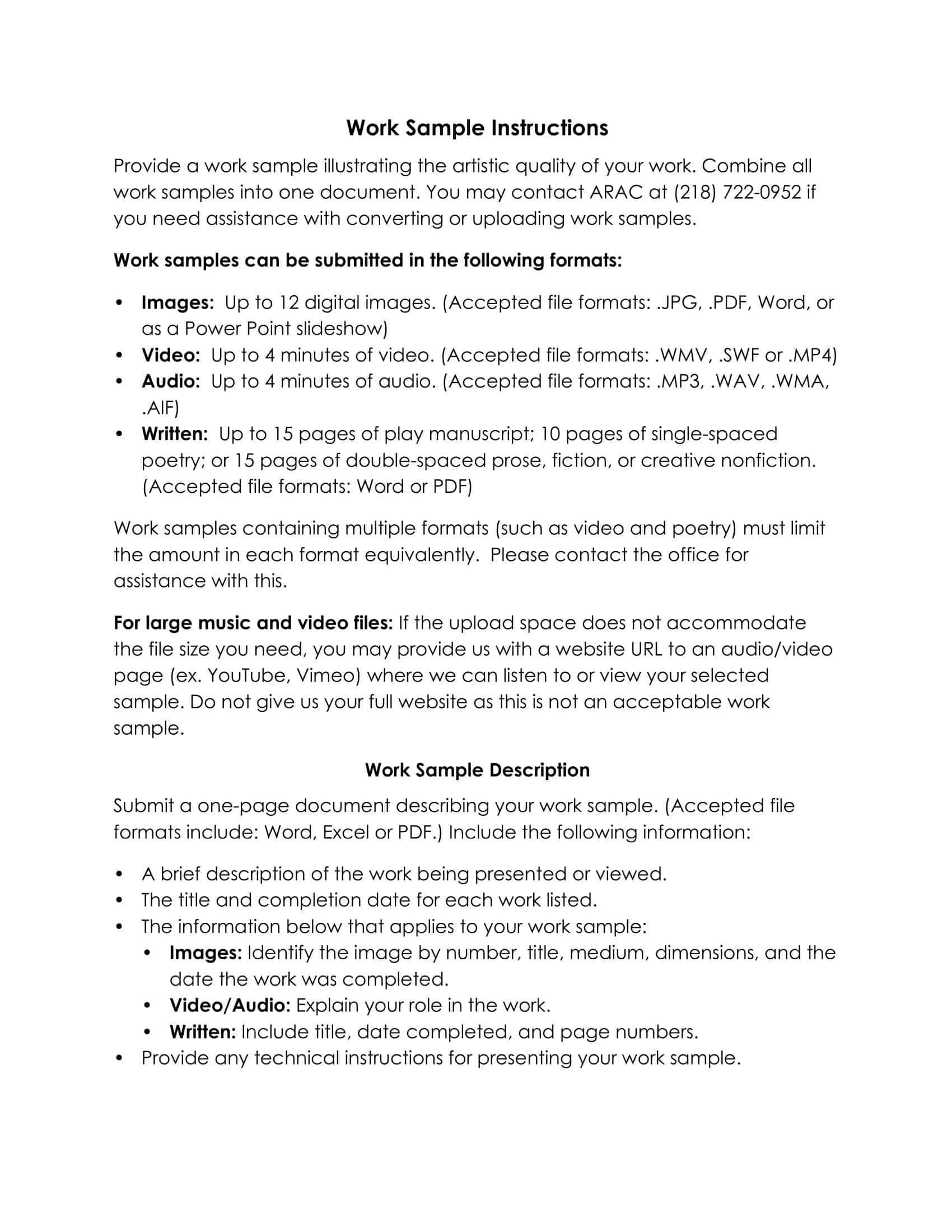





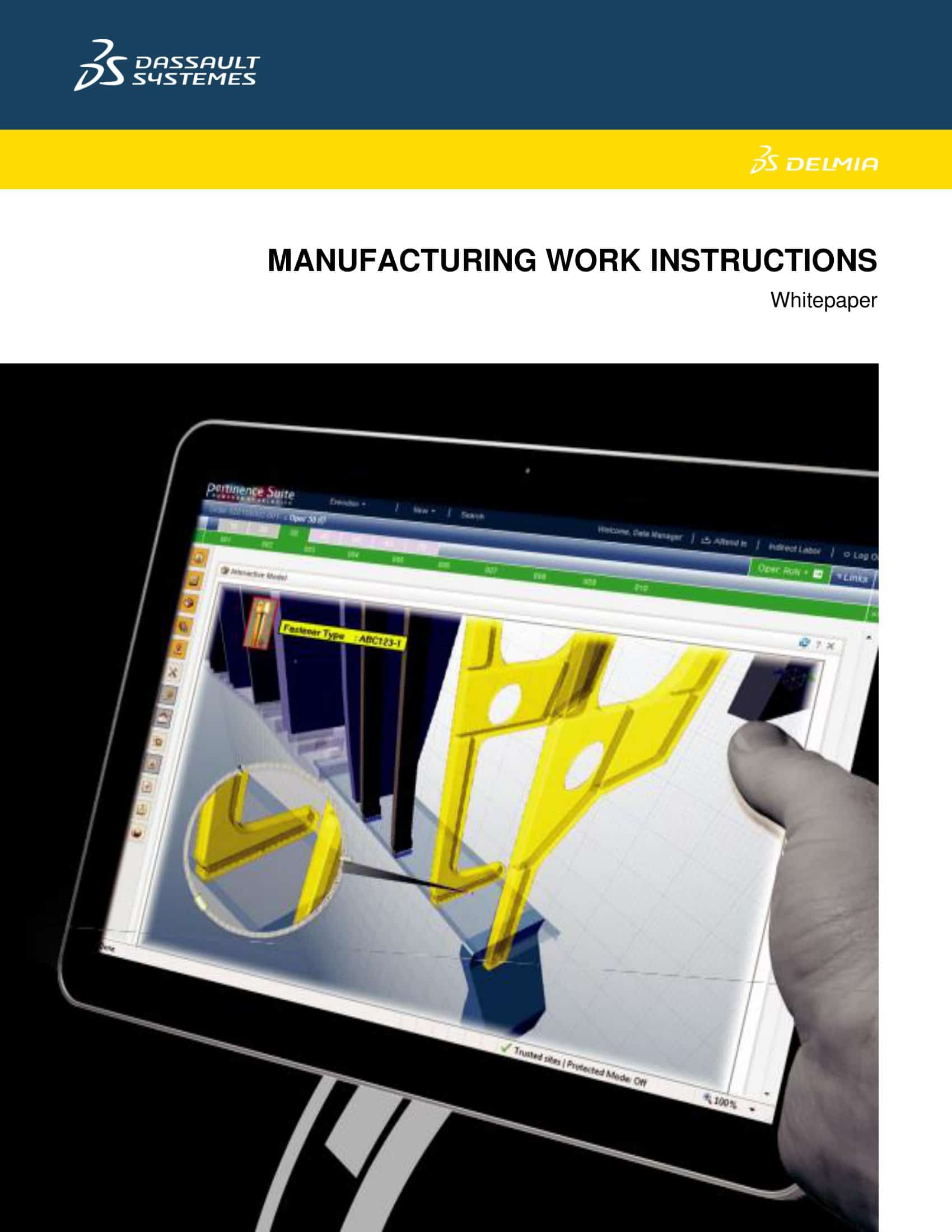
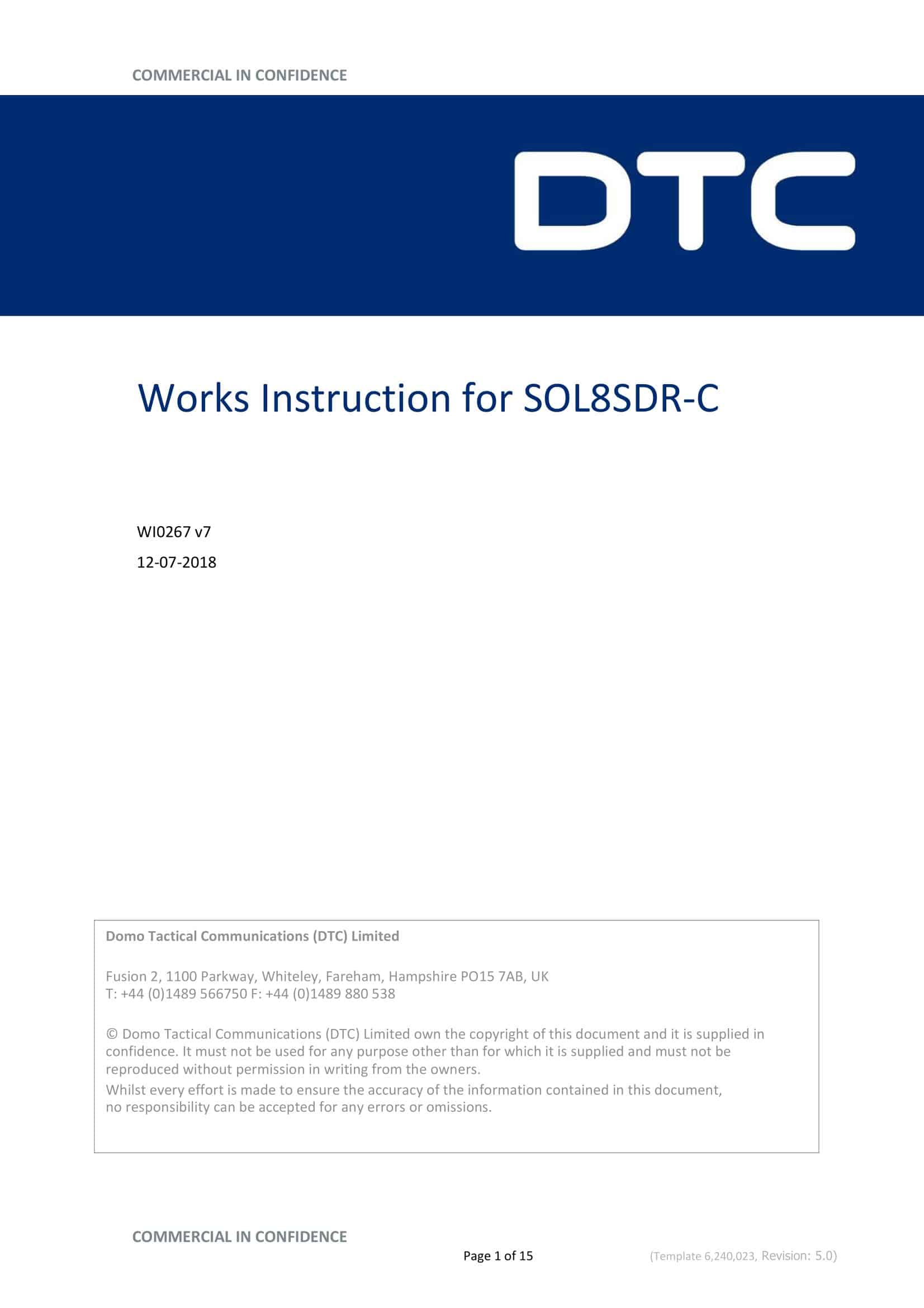

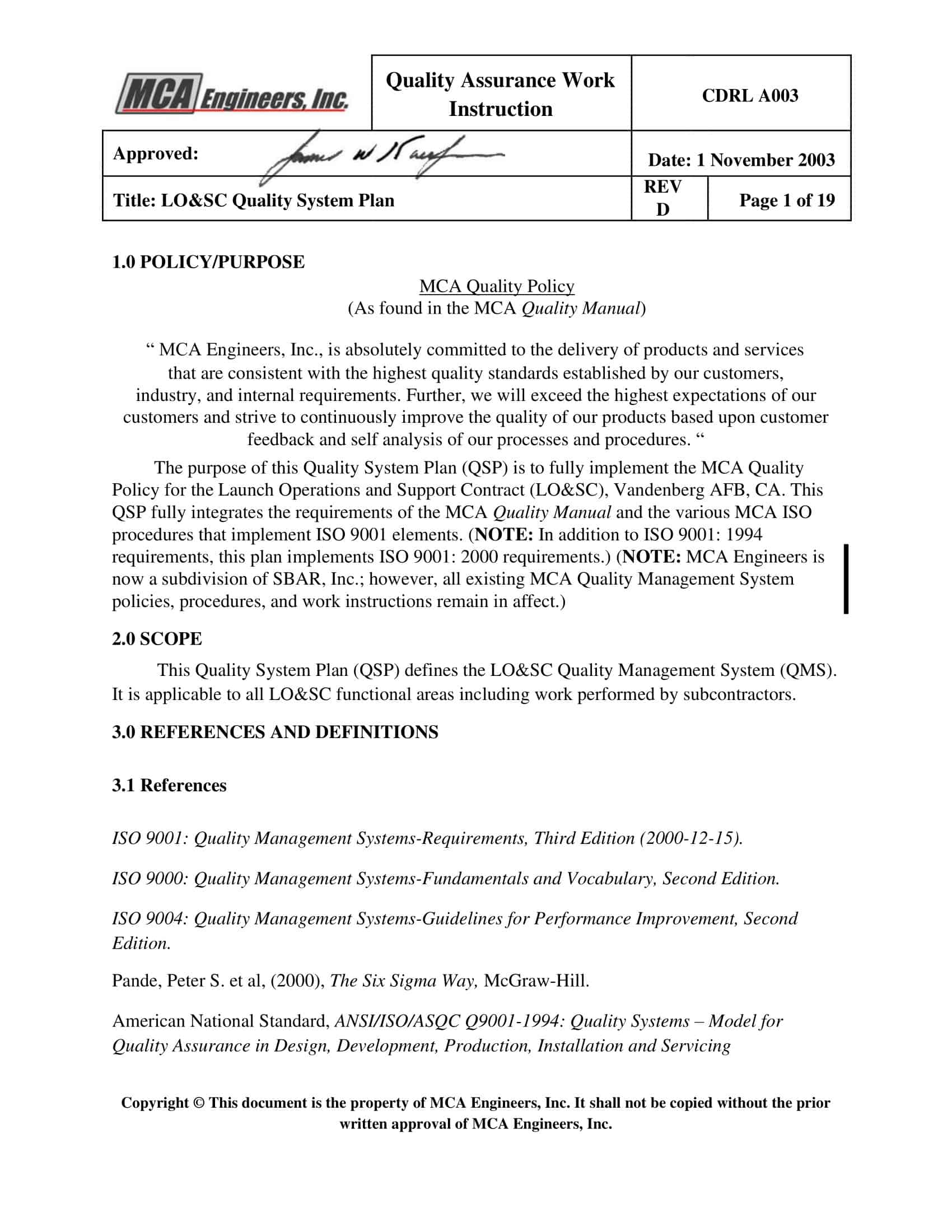









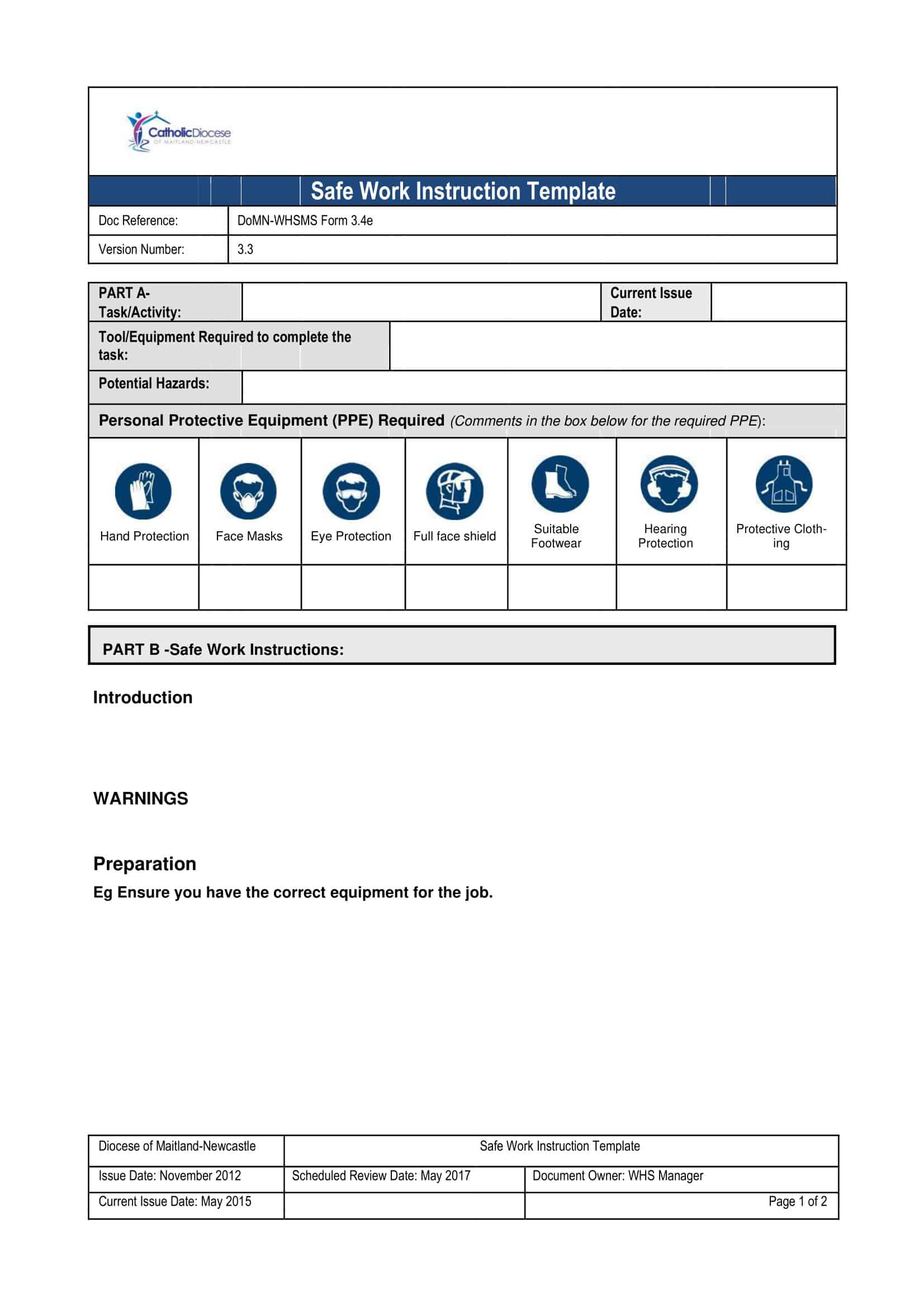





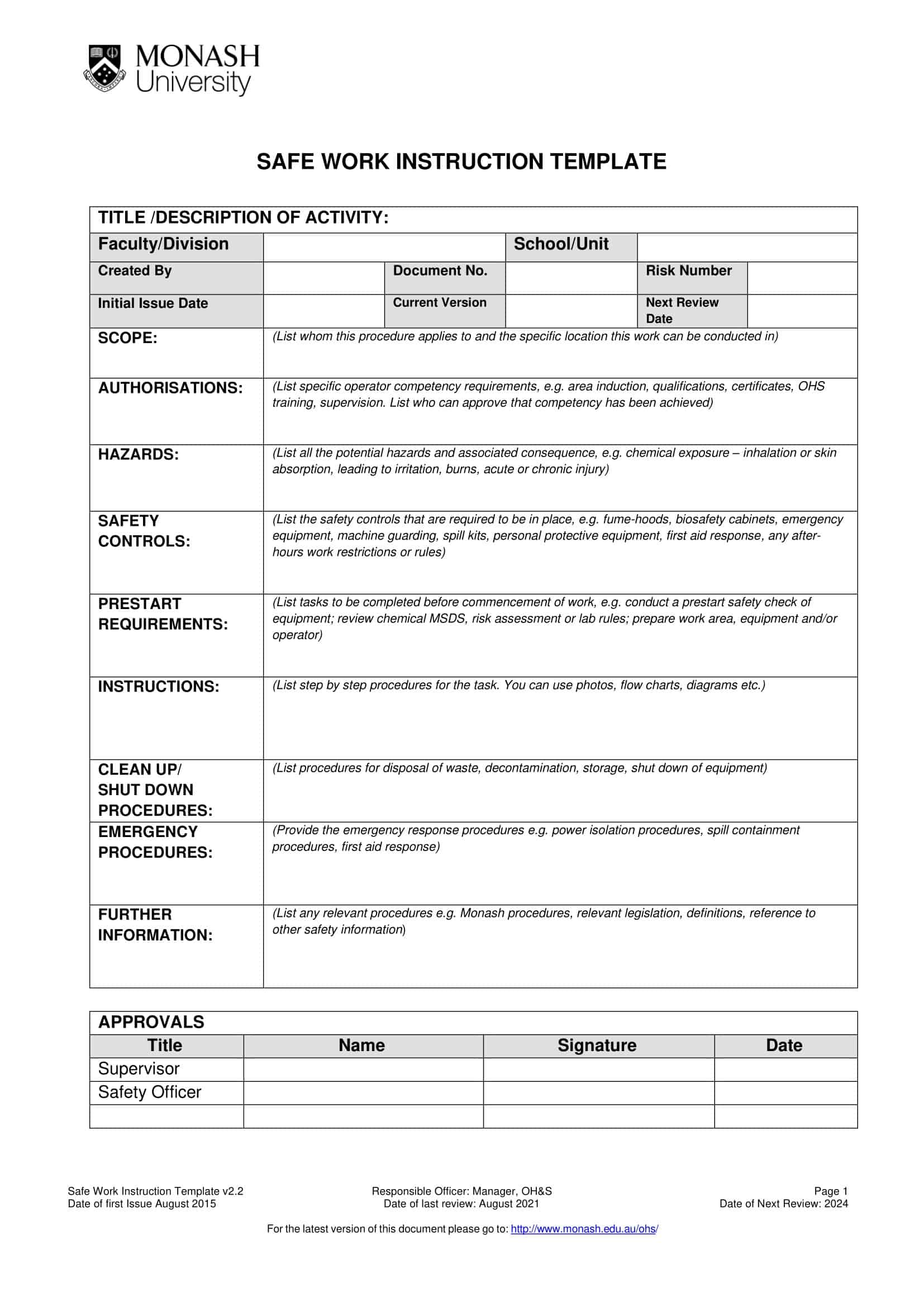













![Free Printable Credit Card Authorization Form Templates [PDF, Word, Excel] 1 Credit Card Authorization Form](https://www.typecalendar.com/wp-content/uploads/2023/06/Credit-Card-Authorization-Form-150x150.jpg)
![Free Printable Stock Ledger Templates [Excel,PDF, Word] 2 Stock Ledger](https://www.typecalendar.com/wp-content/uploads/2023/08/Stock-Ledger-150x150.jpg)
![Free Printable Financial Projections Templates [Excel, PDF] 3 Financial Projection](https://www.typecalendar.com/wp-content/uploads/2023/05/Financial-Projection-1-150x150.jpg)
